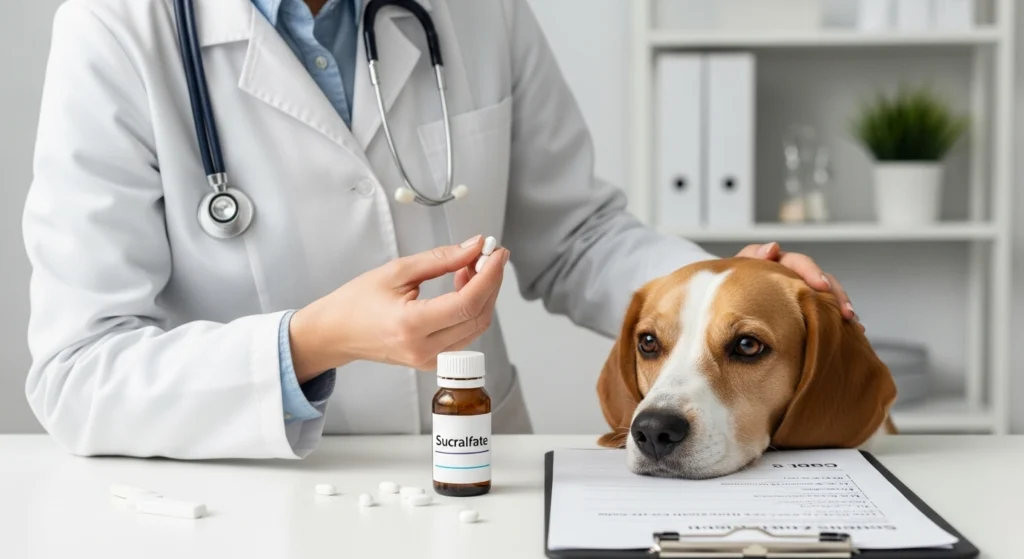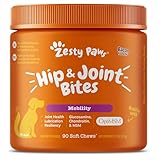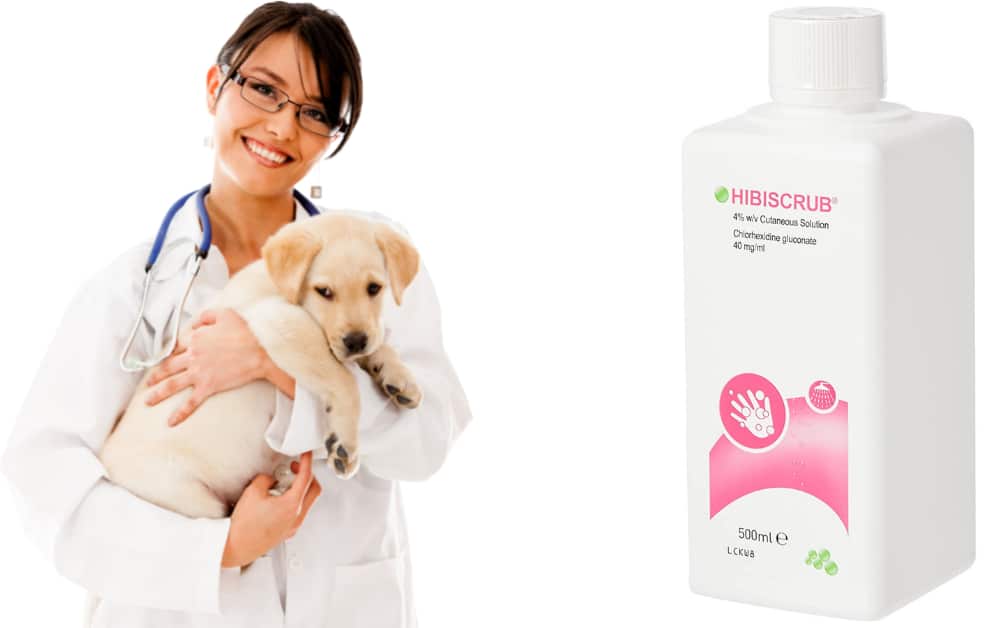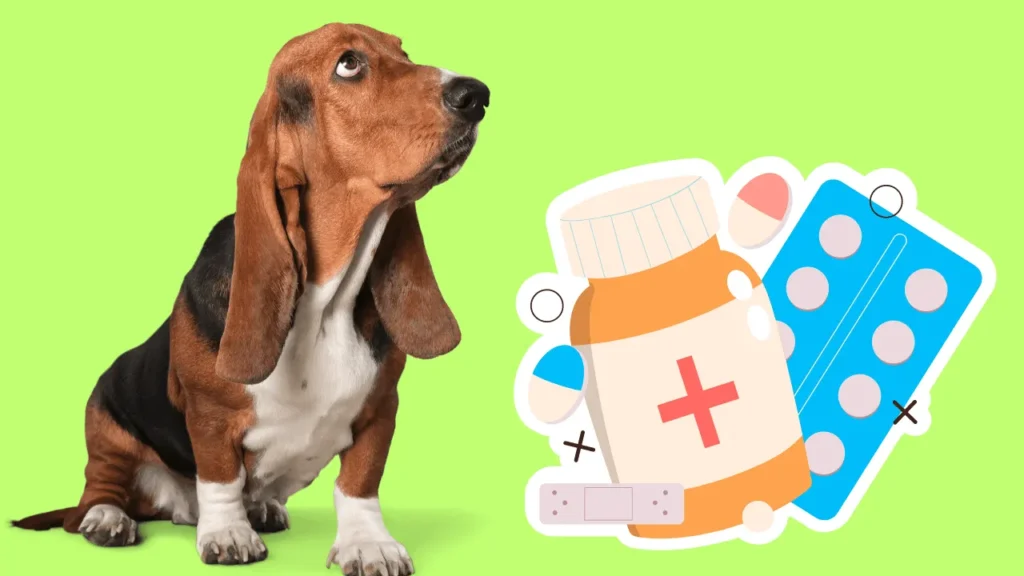Sucralfate for dogs is a prescription medication used off-label to treat and prevent ulcers in the gastrointestinal tract, including the mouth, esophagus, stomach, and upper small intestine.
The typical sucralfate dosage for dogs ranges from 250 mg to 1,000 mg by mouth every 6 to 12 hours, depending on the dog’s weight. This medication works by forming a protective barrier over ulcers, allowing them to heal while being shielded from stomach acid.
While generally safe, the primary side effect reported in dogs is constipation, making it a relatively well-tolerated treatment option for canine gastrointestinal issues.
Key Takeaways
- Sucralfate is used off-label in dogs to treat ulcers in the GI tract, including the mouth, esophagus, stomach, and upper small intestine
- The proper sucralfate dosage for dogs depends on weight, typically ranging from 250mg to 1000mg every 6-12 hours
- Tablets must be dissolved in water before administration to create a slurry
- Should be given on an empty stomach for optimal effectiveness
- Constipation is the main side effect, though it’s relatively uncommon
- Can interact with other medications, so administer other drugs at least 2 hours apart
- Not FDA-approved for dogs but commonly prescribed by veterinarians for ulcer treatment
What is Sucralfate for Dogs?
Sucralfate for dogs is a medication that belongs to a class of drugs called ulcer protectants. While it’s FDA-approved for treating ulcers in humans, it’s used “off-label” in veterinary medicine. This means that while it hasn’t been officially approved for use in dogs by the FDA, veterinarians can legally prescribe it based on their professional judgment and experience.
The brand name for sucralfate in humans is Carafate, and it comes in tablet or liquid form. When prescribed for dogs, veterinarians typically recommend the tablet form, which needs to be dissolved in water before administration.
Sucralfate Dosage For Dogs
The proper sucralfate dosage for dogs is determined primarily by the dog’s weight, though the severity of the condition and individual response to treatment may also influence the exact dosage prescribed by your veterinarian.
The typical dosage range for sucralfate in dogs is:
- Small dogs (under 20 lbs): 250-500 mg every 6-8 hours
- Medium dogs (20-60 lbs): 500-1000 mg every 6-8 hours
- Large dogs (over 60 lbs): 1000 mg every 6-8 hours
However, these are general guidelines, and your veterinarian will determine the exact dosage based on your dog’s specific needs.
Sucralfate For Dogs Dosage Chart By Weight
| Dog Weight | Dosage | Frequency | Tablet Strength |
|---|---|---|---|
| Under 10 lbs | 250 mg | Every 8 hours | 1/2 of 500mg tablet |
| 10-20 lbs | 250-500 mg | Every 8 hours | 1/2 to 1 tablet (500mg) |
| 20-40 lbs | 500 mg | Every 8 hours | 1 tablet (500mg) |
| 40-60 lbs | 500-1000 mg | Every 6-8 hours | 1-2 tablets (500mg) |
| 60-80 lbs | 1000 mg | Every 8 hours | 2 tablets (500mg) or 1 tablet (1000mg) |
| 80-100 lbs | 1000 mg | Every 6-8 hours | 2 tablets (500mg) or 1 tablet (1000mg) |
| Over 100 lbs | 1000 | Every 6-8 hours | 2-4 tablets (500mg) or 1-2 tablets (1000mg) |
Note: This chart is a general reference. Always follow your veterinarian’s specific dosage instructions.
How Does Sucralfate Work in Dogs?
When a dog ingests sucralfate, the medication travels to the stomach where it reacts with stomach acid to form a thick paste-like substance. This paste has a special affinity for proteins found in ulcerated tissues, causing it to bind directly to the ulcer sites.
Once bound, the sucralfate paste creates a protective barrier over the ulcer, similar to how a liquid bandage works on skin. This barrier serves several important functions:
- It shields the ulcer from further damage by stomach acid
- It protects the ulcer from digestive enzymes
- It may help stimulate the production of protective mucus
- It may promote healing by increasing blood flow to the area
- It may bind to bile acids that can worsen ulcers
This protective effect allows the ulcer to heal naturally without being continuously irritated by stomach contents. Unlike some other ulcer medications, sucralfate works locally at the ulcer site rather than being absorbed into the bloodstream in significant amounts.
How to Calculate the Right Dosage
Veterinarians typically calculate the sucralfate dosage based on a range of 10-40 mg per pound (22-88 mg/kg) of body weight, given every 6-12 hours. For example:
- A 20 lb dog might receive 250-500 mg per dose
- A 50 lb dog might receive 500-1000 mg per dose
- A 100 lb dog might receive 1000 mg per dose
The exact dosage within this range depends on the severity of the ulcer, the location of the ulcer, and how the dog responds to treatment.
How to Administer Sucralfate to Dogs
Proper administration of sucralfate is crucial for its effectiveness. Here’s a step-by-step guide to giving your dog this medication:
Preparing the Medication
- Dissolve the tablet: Sucralfate tablets must be dissolved in water before administration. Crush the tablet (if necessary) and mix it with a small amount of water to create a slurry or paste.
- Use the right amount of water: Generally, 5-10 mL of water (1-2 teaspoons) is sufficient for a 500mg or 1000mg tablet. The goal is to create a thick liquid that’s easy to administer but not so thin that it loses its protective properties.
- Prepare in advance: You can prepare the slurry just before giving it to your dog. Don’t prepare it too far in advance as it may thicken and become difficult to administer.
Giving the Medication
- Timing is crucial: Administer sucralfate on an empty stomach, typically at least 1 hour before or 2 hours after meals. This ensures the medication can bind directly to the ulcer without interference from food.
- Use a syringe or dropper: Draw up the sucralfate slurry into a syringe or dropper for easier administration.
- Administer orally: Gently insert the syringe into the side of your dog’s mouth, between the cheek and gums, and slowly depress the plunger. Aim for the back of the throat to encourage swallowing.
- Follow with water: After giving the medication, you can offer your dog a small amount of water to ensure they swallow all of the sucralfate.
Tips for Difficult Dogs
If your dog is resistant to taking medication:
- Mix the slurry with a small amount of flavorful liquid like low-sodium broth or tuna water (only if approved by your veterinarian)
- Use a pill pocket after administering the slurry to mask any residual taste
- Stay calm and positive during administration, as dogs can sense anxiety
- Reward your dog with praise or a small treat (if approved by your vet) after taking the medication
What is Sucralfate Used For in Dogs?
Sucralfate for dogs is primarily used to treat and prevent various types of ulcers throughout the gastrointestinal tract. Here are the specific conditions it’s commonly prescribed for:
Types of Ulcers Treated
- Gastric Ulcers: These are open sores that develop in the stomach lining. They can be caused by:
- Long-term use of NSAIDs (non-steroidal anti-inflammatory drugs)
- Stress
- Certain infections
- Liver or kidney disease
- Cancer
- Duodenal Ulcers: These ulcers occur in the upper part of the small intestine (duodenum). They share similar causes with gastric ulcers and can be particularly painful.
- Esophageal Ulcers: These develop in the esophagus and can be caused by:
- Frequent vomiting (bringing stomach acid into the esophagus)
- Foreign objects lodged in the esophagus
- Certain medications
- Acid reflux disease
- Oral Ulcers: These are sores in the mouth that can make eating painful. They may be caused by:
- Dental disease
- Certain infections
- Autoimmune conditions
- Cancer
Preventative Uses
In some cases, veterinarians may prescribe sucralfate as a preventative measure when a dog is at high risk of developing ulcers. This might include:
- Dogs who have ingested toxic substances that can cause ulcers (like ibuprofen)
- Dogs who need to take medications known to cause ulcers (like NSAIDs)
- Dogs with chronic conditions that increase ulcer risk (like kidney or liver disease)
- Dogs undergoing stressful situations (like hospitalization or surgery)
Other Uses
While primarily used for ulcers, some veterinarians may prescribe sucralfate for other gastrointestinal conditions, including:
- Gastritis (inflammation of the stomach lining)
- Esophagitis (inflammation of the esophagus)
- Acid reflux disease
- Certain types of colitis (inflammation of the colon)
Side Effects of Sucralfate in Dogs
Sucralfate is generally considered a safe medication for dogs with a low risk of side effects. However, like any medication, it can cause adverse reactions in some animals.
Common Side Effects
The most commonly reported side effect of sucralfate in dogs is:
- Constipation: This occurs because sucralfate can slow down the movement of food through the digestive tract. If your dog experiences constipation, your veterinarian may recommend increasing fluid intake, adding fiber to the diet, or adjusting the dosage.
Rare Side Effects
While uncommon, some dogs may experience:
- Dry mouth: This can lead to increased thirst
- Flatulence: Some dogs may experience increased gas
- Nausea: Though rare, some dogs may feel nauseous after taking sucralfate
- Allergic reactions: Signs include itching, hives, swelling, or difficulty breathing (seek immediate veterinary care if these occur)
Long-Term Effects
There are no known long-term negative effects of sucralfate use in dogs. Since the medication works locally in the gastrointestinal tract and is not significantly absorbed into the bloodstream, it doesn’t typically cause systemic effects even with long-term use.
What to Do If Side Effects Occur
If you notice any side effects in your dog:
- Mild side effects: For constipation, ensure your dog has access to fresh water and consider adding a small amount of canned pumpkin to their diet (with your veterinarian’s approval).
- Moderate side effects: Contact your veterinarian for advice on dosage adjustment or supportive care.
- Severe side effects: If you notice signs of an allergic reaction (difficulty breathing, swelling) or severe constipation, seek immediate veterinary care.
Precautions and Drug Interactions
- Toxin ingestion: Use sucralfate with caution in dogs that have ingested something toxic. While it can help prevent ulcers caused by toxins, it can also slow the movement of the toxin through the digestive tract, potentially increasing absorption. Always consult with a veterinarian or poison control center before using sucralfate in these cases.
- GI obstruction: Dogs with known or suspected gastrointestinal obstruction should not receive sucralfate without veterinary supervision.
- Diabetes: Sucralfate contains a small amount of aluminum, which could potentially affect dogs with severe kidney disease. Use with caution in these patients.
- Pregnancy and nursing: The safety of sucralfate in pregnant or nursing dogs has not been established. Use only when the potential benefits outweigh the risks, as determined by your veterinarian.
Drug Interactions
Sucralfate can interact with many other medications by reducing their absorption. This happens because sucralfate binds to other medications in the digestive tract, preventing them from being properly absorbed into the bloodstream.
To minimize interactions, administer sucralfate at least 2 hours before or after other medications. Common medications that may interact with sucralfate include:
| Medication Type | Examples | Interaction |
|---|---|---|
| Cancer medications | Alendronate | Reduced absorption |
| Antacids | Aluminum hydroxide, calcium carbonate | May reduce effectiveness of both medications |
| Antibiotics | Ciprofloxacin, doxycycline, azithromycin | Reduced absorption and effectiveness |
| Heart medications | Digoxin, furosemide | Reduced absorption |
| Antifungals | Ketoconazole, itraconazole | Reduced absorption |
| Thyroid medications | Levothyroxine | Reduced absorption |
| Seizure medications | Phenytoin | Reduced absorption |
| Fat-soluble vitamins | Vitamins A, D, E, K | Reduced absorption |
| Cough medications | Theophylline | Reduced absorption |
Food Interactions
Sucralfate should be given on an empty stomach for optimal effectiveness. Food can interfere with the medication’s ability to bind to ulcer sites. Administer sucralfate:
- At least 1 hour before feeding
- At least 2 hours after feeding
When to Call Your Veterinarian
While sucralfate is generally safe, there are situations where you should contact your veterinarian.
Signs of Ulcer Complications
Contact your veterinarian immediately if you notice:
- Vomiting blood (which may look like coffee grounds)
- Dark, tarry stools (indicating digested blood)
- Severe abdominal pain
- Extreme lethargy
- Collapse or fainting
- Refusal to eat or drink for more than 24 hours
These could indicate serious ulcer complications like perforation or severe bleeding.
Signs of Medication Issues
Contact your veterinarian if your dog experiences:
- Severe constipation lasting more than 24-48 hours
- Signs of an allergic reaction (hives, swelling, difficulty breathing)
- Worsening of symptoms despite treatment
- Any new or unusual symptoms
General Questions
You should also contact your veterinarian if you have questions about:
- The proper dosage or administration technique
- Potential interactions with other medications
- The duration of treatment
- What to do if you miss a dose
- When to schedule follow-up appointments
Alternatives to Sucralfate
While sucralfate is an effective treatment for ulcers in dogs, there are alternative medications and approaches that your veterinarian might recommend depending on your dog’s specific condition.
Proton Pump Inhibitors (PPIs)
Proton pump inhibitors reduce stomach acid production by blocking the enzyme system that produces acid. They’re often considered more effective than sucralfate for treating GI ulcers in dogs.
Common PPIs include:
- Omeprazole (Prilosec)
- Pantoprazole (Protonix)
- Esomeprazole (Nexium)
H2 Blockers
H2 blockers reduce stomach acid production by blocking histamine, which stimulates acid production. They’re less potent than PPIs but can still be effective for mild to moderate ulcers.
Common H2 blockers include:
- Famotidine (Pepcid)
- Cimetidine (Tagamet)
- Ranitidine (Zantac)
Antacids
Antacids neutralize stomach acid and can provide quick relief from ulcer pain. However, they don’t promote healing like sucralfate or PPIs.
Common antacids include:
- Aluminum hydroxide
- Calcium carbonate
- Magnesium hydroxide
Protective Coating Agents
Similar to sucralfate, these medications form a protective barrier over ulcers:
- Misoprostol: Protects the stomach lining and reduces acid production
- Bismuth subsalicylate (Pepto-Bismol): Has protective properties and mild antibiotic effects
Dietary Modifications
In addition to medication, dietary changes can help manage ulcers:
- Small, frequent meals to reduce acid fluctuations
- Bland diets during acute flare-ups
- Avoiding foods that irritate the stomach
- Adding probiotics to support digestive health
Success Stories: Dogs Treated with Sucralfate
While individual results may vary, many dogs have benefited from sucralfate treatment. Here are a few examples of how sucralfate has helped dogs with gastrointestinal ulcers:
Case Study 1: Max the Labrador
Max, a 7-year-old Labrador Retriever, was diagnosed with gastric ulcers after a course of NSAIDs for arthritis. He was vomiting frequently and showed signs of abdominal pain. His veterinarian prescribed sucralfate (1000mg every 8 hours) along with omeprazole. Within a week, Max’s vomiting decreased significantly. After a month of treatment, follow-up endoscopy showed his ulcers had healed completely.
Case Study 2: Bella the Dachshund
Bella, a 5-year-old Dachshund, developed esophageal ulcers due to chronic regurgitation from a condition called megaesophagus. Her veterinarian prescribed sucralfate (250mg every 8 hours) to be administered as a slurry. The medication helped heal her esophageal ulcers and made eating more comfortable. Bella continues on a maintenance dose to prevent future ulcers.
Case Study 3: Rocky the German Shepherd
Rocky, a 10-year-old German Shepherd, was diagnosed with duodenal ulcers secondary to kidney disease. He was losing weight and had dark, tarry stools. His veterinarian prescribed sucralfate (1000mg every 6 hours) along with treatment for his kidney disease. Rocky’s condition improved gradually over several weeks, and his ulcers healed after two months of treatment.
Read More From Our Medication Guide:
FAQs
What is sucralfate used for in dogs?
Sucralfate is primarily used to treat and prevent ulcers in a dog’s gastrointestinal tract, including the mouth, esophagus, stomach, and upper small intestine (duodenum). It works by forming a protective barrier over ulcers, allowing them to heal while being shielded from stomach acid and digestive enzymes.
How do I give sucralfate to my dog?
Sucralfate tablets should be dissolved in water to create a slurry before administration. This slurry is then given orally using a syringe or dropper. It’s important to administer sucralfate on an empty stomach, typically at least 1 hour before or 2 hours after meals, to ensure optimal effectiveness.
Can sucralfate be given with other medications?
Sucralfate can interact with many other medications by reducing their absorption. To minimize interactions, administer sucralfate at least 2 hours before or after other medications. Always inform your veterinarian about all medications and supplements your dog is taking before starting sucralfate.
Final Thoughts
Sucralfate for dogs is a valuable medication in veterinary medicine for treating and preventing ulcers in dogs. Its ability to form a protective barrier over ulcerated tissue allows for healing while providing relief from painful symptoms. When administered properly according to weight-based dosing guidelines, sucralfate can significantly improve the quality of life for dogs suffering from gastrointestinal ulcers.
As with any medication, it’s essential to follow your veterinarian’s instructions precisely and to monitor your dog for any side effects or changes in condition. With proper treatment and care, most dogs with ulcers can experience complete healing and return to their normal, happy selves.
If you suspect your dog may have a gastrointestinal ulcer or if your dog has been prescribed sucralfate, work closely with your veterinarian to ensure the best possible outcome for your furry friend.









